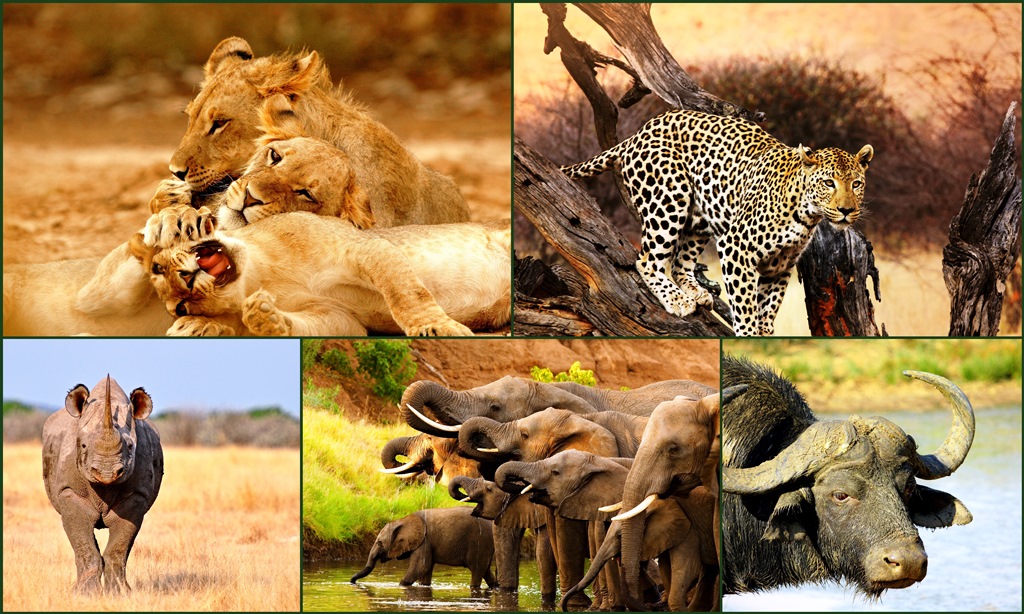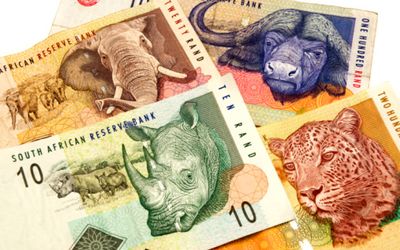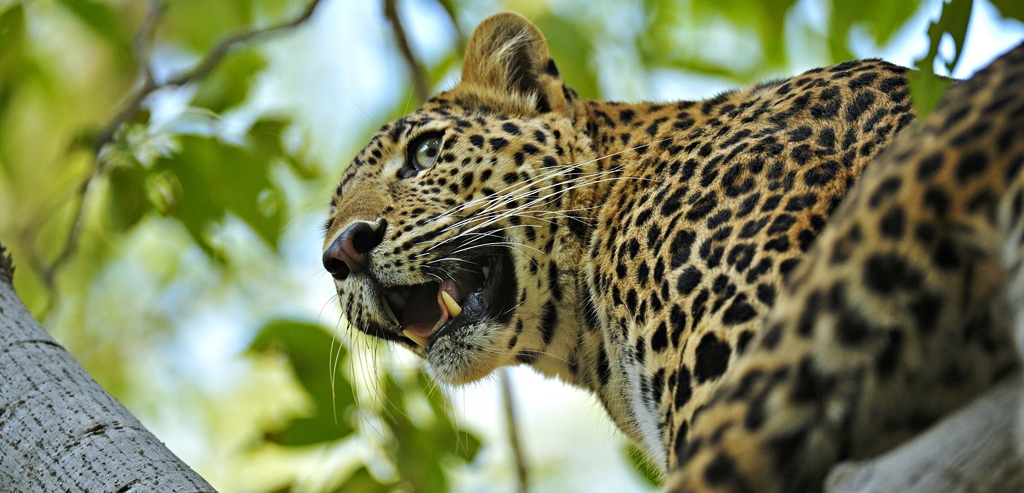The term “Big Five” has become synonymous with African wildlife. It refers to the African Lion, Leopard, Rhinoceros, Elephant and Cape Buffalo. Out of these the Lion and the Elephant are classified as Endangered. The Leopard and the white Rhinoceros are categorized as Near Threatened. The black Rhinoceros is Critically Endangered; hence it cannot be hunted at all. The conservation status of the Cape Buffalo is Least Concern, thus making it the most popular to hunt.

A lot of people could wonder as to why only these 5, why not the Cheetah or the Hippopotamus? The bitter truth is that this term was originally coined by big game hunters (while hunting on foot) and referred to the level of difficultly in bagging these large animals, primarily owing to their ferocity and defense mechanisms when cornered and also the amount of danger involved in direct contacts with these animals.
Afterwards the term was acquired by Safari tour operators for marketing purposes. The Rand banknotes released in South Africa in 1990 and later feature big-five animals on each denomination.

Image Credits: bdlive.co.za/markets
Uganda, South Africa, Tanzania, Botswana, Malawi, South Africa, Zimbabwe, Namibia, Kenya and Democratic Republic of the Congo are the countries where all the members of the big five can be found.
To read more about Africa’s Wildlife check out these destinations:
Kruger National Park – South Africa, Maasai Mara National Park – Kenya, Okavango Delta – Botswana, Serengeti National Park – Tanzania
For trips log on to www.adventurenation.com



